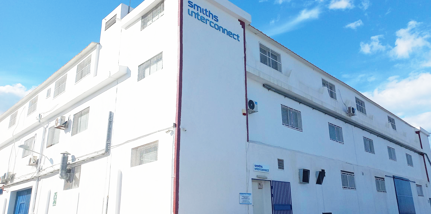15 October 2024
Key connectivity components from Smiths used in the mission, which has the goal of identifying whether Europa can support life
Smiths Group, a leading industrial technology company, is proud to support NASA and the Johns Hopkins Applied Physics Laboratory in providing key components for use in the forthcoming Europa Clipper mission to explore one of Jupiter’s moons.
Europa, one of Jupiter’s 95 moons, was famously referenced in Arthur C. Clark’s book ‘2001: A Space Odyssey’ and is a major candidate to support life, due to the presence of a saltwater ocean capped by a layer of ice on its surface. In this respect it is very similar to conditions on earth – also an ocean world.
Smiths Group supplied connectivity and communication components (‘isolators’) for the mission through its Smiths Interconnect business, which produces highly engineered connectivity products for use in mission critical applications such as space travel.
The isolators supplied by Smiths serve two key purposes: Designed into a subsystem that sends telemetry data (measurements and other critical data points that will be collected on Europa’s surface) back to earth for monitoring and investigation; and forming part of the broadband data relay equipment that will be used to send images of the moon collected on the mission back down to earth.
The components are designed and made in Smiths Interconnect’s design and manufacturing facility in Dundee, Scotland, where products are built and then rigorously tested in the site’s qualification and test laboratory to ensure they can withstand the extreme conditions of space.
Specifically, the isolators are designed to be electromagnetically and magnetically shielded – meaning they have very high levels of immunity to the harsh electromagnetic environments found in space and are mechanically robust to withstand the launch and operational dynamic and thermal conditions aboard the probe.
The products were supplied to the Johns Hopkins Applied Physics Laboratory, which designed Europa Clipper’s communications system, and then integrated into the full spacecraft at NASA’s Jet Propulsion Laboratory in Southern California.
Julian Fagge, President of Smiths Interconnect, said: “We are proud to continue our trusted partnership with the Johns Hopkins Applied Physics Laboratory in support of NASA’s Europa Clipper mission, and to continue our long heritage of space participation. Our Smiths Interconnect team have now participated in over 40 deep space missions and counting, including several to the Saturnian and Jovian systems.”
General media enquiries
Contact our global media and communications team at:

Please note – the press team can only answer enquiries from accredited members of the press.
Related articles

Smiths Detection secures deal to supply systems to major cruise lines
Find out more

Smiths Interconnect expands EMEA cable harness production capacity
Smiths Interconnect, announces the expansion of its cable harness production capacity at its facility in Tunisia, an investment for growth in support of all its EMEA production sites.
Find out more

Smiths Detection accelerates AI security offering with BigBear.ai collaboration
Read our company news as Smiths Detection accelerates its AI security offering with BigBear.ai
Find out more





